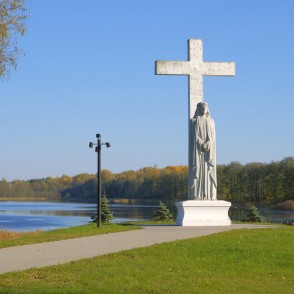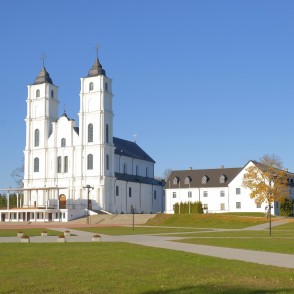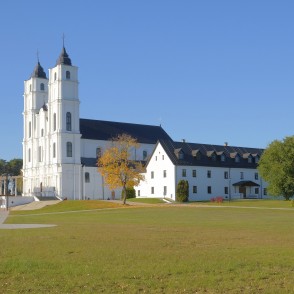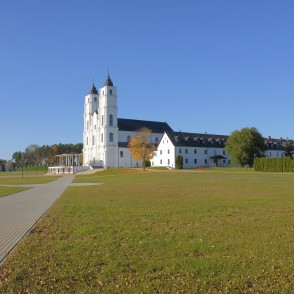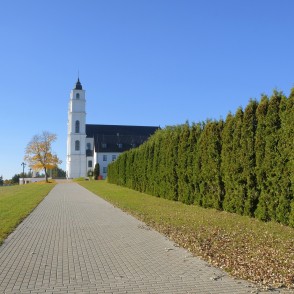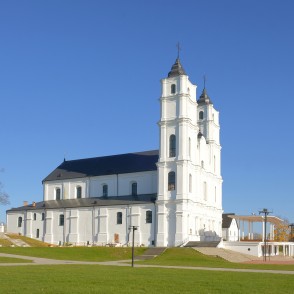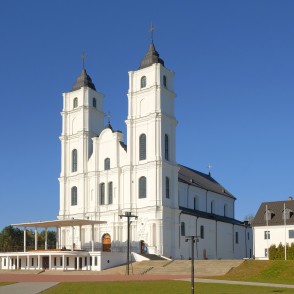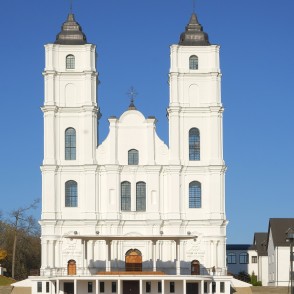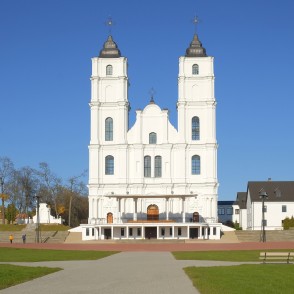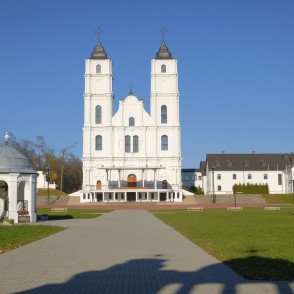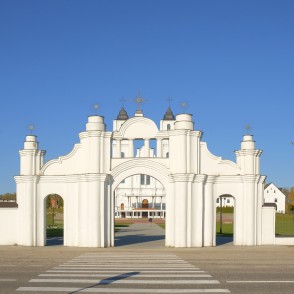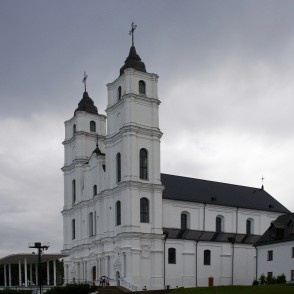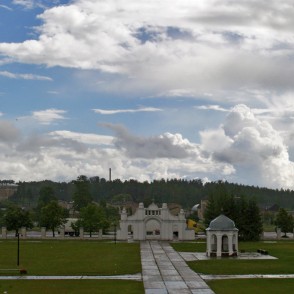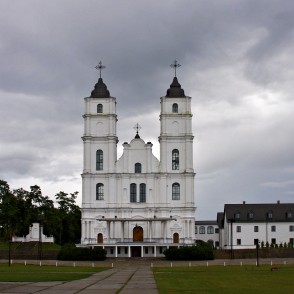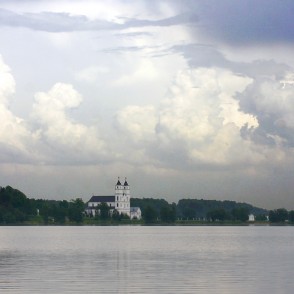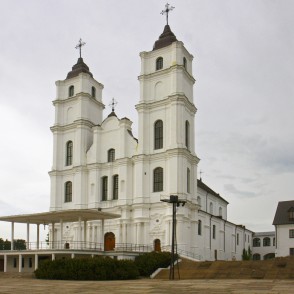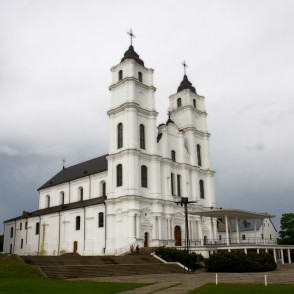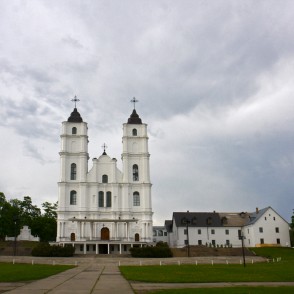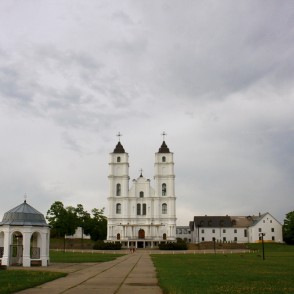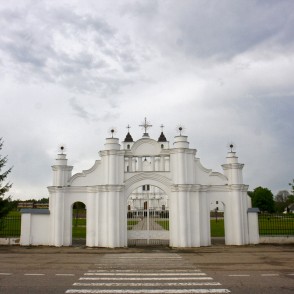Aglonas Basilica is sacred place visited by thousands of people.
Cirīšu iela 8, Aglona, Aglonas novads, LV- 5304
+371 29188740; +371 65381109
ab@aglonasbazilika.lv, abv@aglonasbazilika.lv
www.aglonasbazilika.lv
The Aglona Roman Catholic Basilica of the Assumption of the Blessed Virgin Mary (Latvian: Aglonas Vissvētākās Jaunavas Marijas debesīs uzņemšanas Romas katoļu bazilika) in Aglona is one of the most important Catholic spiritual centers in Latvia.
Construction of the present church, which is in the Italian Baroque style, began in 1768 and was completed in 1780. Dedicated to the Assumption of the Virgin Mary, it was consecrated in 1800 by Bishop J. Benislavski.
The church was the seat of the bishop of Riga from 1920 to 1924, when the newly promoted archbishop Antonijs Springovičs moved to the Cathedral of St. James in Riga. Springovičs was consecrated bishop there on 22 August 1920 by Kaunas auxiliary bishop Juozapas Skvireckas.
Every year thousands of pilgrims flock to the Basilica on 15 August, feast day of the Assumption of the Blessed Virgin Mary. It is one of the eight international shrines recognized by the Holy See[6] and its religious events were attended by around 300,000 pilgrims.
In 1980 the Basilica of the Assumption celebrated its 200th anniversary, and Pope John Paul II granted it the title of "Basilica minoris". In September 1993 the same pope visited the basilica.
History
In 1697, Landlady Eve Justīne Šostovicka called the then bishop of Livonia, Nicholas Paplavskis, and in 1688 arrived from Vilnius a Dominican monastery priors father, Remigijs Mosokovskis and Aglona chose to place sacral buildings. In 1699 Dominicans founded a monastery where in 1670 they first built a wooden church. On 10 September 1751 was consecrated a wooden church during the third visit of the Livonian Bishop of Aglona, Joseph Dominic Puzinas. Church Dominicans placed Our Lady, which was painted by Trakai Virgin icon sample.
When the original church was destroyed by fire, instead of the 1768 to 1780 year built brick monastery buildings and the current church. The interior of the church was the result of the 18th–19th century, but the pulpit, organ and confessional – the end of 18th century.
Basilica of the Assumption of Aglona was built in the late Baroque style, and it is decorated with two 60-meter-high (200 ft) towers. Inside, there are cross vaults, arches, columns and it is decorated with rococo ornaments. Every year on the 15th of August, pilgrims come to celebrate the Virgin Mary's Assumption day. The Church kept the painting, sculpture and art values, including the icon of "Our Lady of Aglona's Miracle". It is believed that the painting has a healing ability. From 2011 to 2013 diocesan bishop John Bulis coordinated a Basilica's restoration work. It had pitch roofing, sheet metal cover being replaced with copper and renovation works from Basilica and convent. The basilica was carried out in a complete change of wall color, retaining the Baroque and Rococo styles, but changing the colors and patterns on the walls. The altar's large columns and cornices evolved from blue-green marble imitation of the little pink reddish, thus the whole altar become much "warmer". In contrast, the rest of the wall painting in the Basilica of the pitch line of decorative elements are pale yellow and pink colors of marble imitation celadon. All Basilica's decorative paint is a lot more marble imitation than it was before. It lost a few pictures of the saints and Christian symbols such as the dove (as a symbol of the Holy Spirit), the Lamb of God symbol, etc.
en.wikipedia.org
Aglona basilica was built in the late baroque style; it is decorated with two 60 meters high towers. Pilgrims come to Aglona every year on August 15 to celebrate the day of the Assumption of the Virgin Mary into Heaven. It is one of the most well-known sacred sites in the world. Groined vaults, arches and columns splendidly decorated in rococo style can be found inside. The Dominican order founded a monastery and built the first wooden church in Aglona in the 17th century. When in 1699 the wooden church burned down, the stone building of a monastery and the present temple was built on its place in 1768 – 1780. The interior finish of the church was created in the 18th – 19th century, but the pulpit and the organ – at the close of the 18th century.
The church houses a collection of paintings, sculptures and artistic treasures, including a famous icon “Our Miraculous Lady of Aglona” which is uncovered only during religious feasts. The icon is considered to have healing powers. The Pope of Rome John Paul II visited Aglona basilica in September of 1993. Due to this visit extensive renovation works in the church and improvements of the surrounding area were carried out.
The Dominicans (“white fathers”) built the first wooden church together with the monastery in 1700. The monks placed the Holy Mother’s icon (brought by them from Vilnius) in the church, prayed in front of it, and called on all the believers to do the same. Owing to a number of recovery instances the first pilgrimages to Aglona started. The white fathers initiated the construction of a baroque style stone church and monastery in 1768, in 1780 they finished the building process and consecrated the new buildings. As the Russian Empire prohibited the affiliation of new candidates to the monastery, the last of the white fathers died at the end of the 19th century, and ordinary diocesan priests began to serve Aglona. In 1920 the first bishop of Latvian origin A. Springovičs was consecrated in Aglona; he was the one who selected Aglona church to be the renewed Riga Archbishopric cathedral. Right after that Theological Seminary was opened in the monastery, and after a year – Aglona Catholic Gymnasium. The quantity of pilgrims increased even more, then Aglona was called the Catholic centre of Latvia. In 1980 the Pope gave Aglona church the title of the “minor basilica” (“basilica minoris”). It is the only one in Latvia. The Pope of Rome John Paul II arrived to Aglona as a pilgrim on September 9, 1993. In 1995 the parliament of the Republic of Latvia passed the law “The Sacred Site of National Importance in Aglona”.
en.aglona.travel

